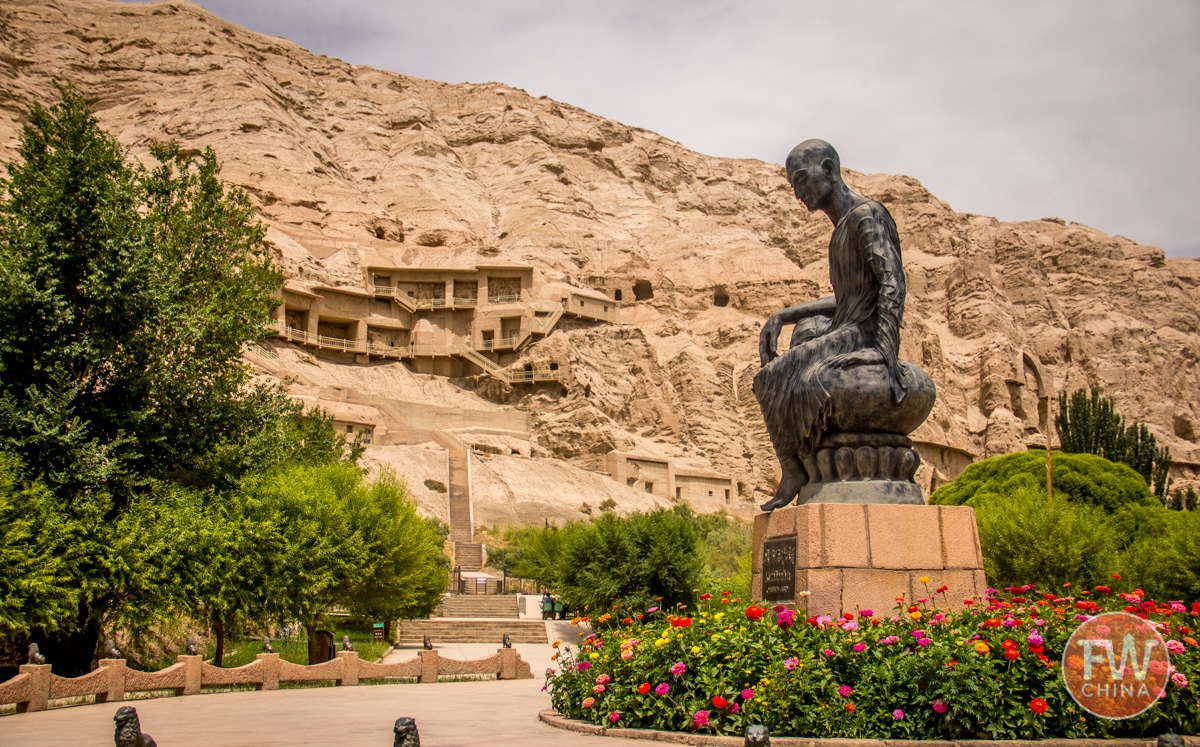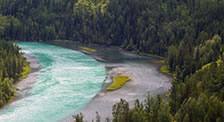Buddhist Stupas in Xinjiang | “A Tale of Two Towers”
Thousands of years of history can be found scattered throughout China’s remote, western region of Xinjiang. Traveling along these old routes, you’ll run across ancient cities, painted caves, stone men and mysterious, crumbling…Buddhist stupas. This is the fascinating story detailing my discovery of two of these Buddhist stupas in Xinjiang.
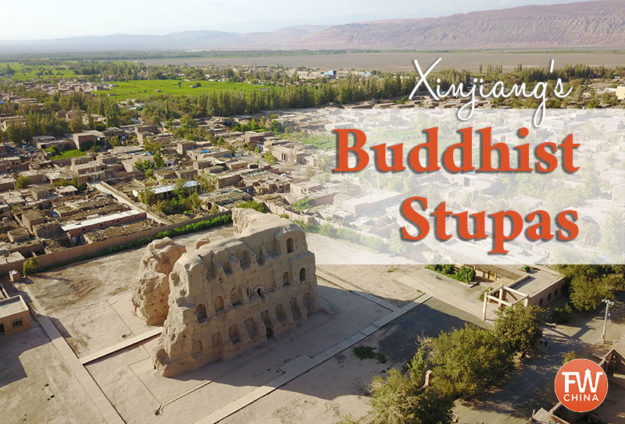
Have you ever seen the old Indiana Jones movies where Harrison Ford, playing an archaeologist, discovers ancient tombs filled with forgotten treasures? I remember watching those films as a kid and thought about how great it would be to explore uncharted territories and unearth priceless antiquities.
Somewhere down the line, I began to believe that exploration and discovery were no longer possible.
There was nothing left to find, right?
That’s what I love about life in Xinjiang. Living here has convinced me there are still corners of the world that haven’t been documented in history books and travel guides.
This is especially true after searching for and discovering the two lost Buddhist towers of Turpan.
*Note: The information found here is part of the comprehensive FarWestChina Xinjiang Travel Guide. If you’re traveling to Xinjiang anytime in the future, grab a copy for yourself!
Discovering Buddhist Stupas in Xinjiang
Before continuing on, join me on my adventure to discover these two Buddhist stupas by first watching the video below.
Then you can keep reading to learn more about the two towers as well as how to plan your own adventure to discover these towers for yourself.
If you enjoyed this video, check out all the others on the FarWestChina YouTube Channel!
What are Buddhist Stupas?
A Buddhist stupa is generally a type of structure or mound that is hemispherical in shape. The purpose of the stupas varies, but often includes housing Buddhist relics, commemorating events in Buddha’s life or symbolizing Buddhist theology.
Buddhism swept through Xinjiang in the 1st century AD with the flow of merchants and armies. This was well before the spread of Islam in the 11th century.
As the teachings of Buddhism traveled throughout the region, towers were built to display statues and art. Some of these stupas were huge towers and some of them were small mounds, such as the stupas on the northern end of Turpan’s ancient city of Jiaohe (seen below).
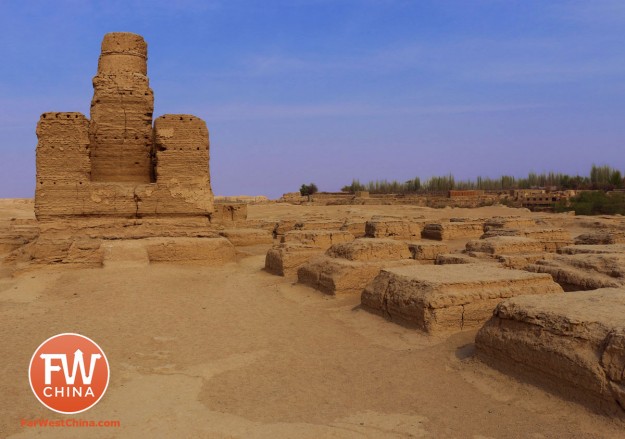
What interests me most, though, are the tall towers that ancient explorers used to write about. There’s not a mention of them in any travel guide and yet I had heard they existed.
I was determined to find what were known as the “Sirkip” and “Taizang” towers reportedly located about an hour east of the oasis town of Turpan.
History of Sirkip and Taizang Towers
Known as the Sirkip and Taizang Towers, Chinese sources indicate they were built sometime between the 6th and 7th centuries AD. While the Taizang Tower still stands and is a protected landmark, the Sirkip Tower unfortunately collapsed and has now disappeared.
Reaching 20 meters in height, the Taizang Tower features Buddhist shrines on all four sides. Prior to its collapse, the Sirkip Tower was also constructed in similar fashion. Archaeologists claim that the structures were tied to the ancient city of Gaochang, which emerged as a trading center along the ancient Silk Road. Ancestors to the Uyghurs even had established a kingdom at Gaochang in the early 9th century and called it Qocho.
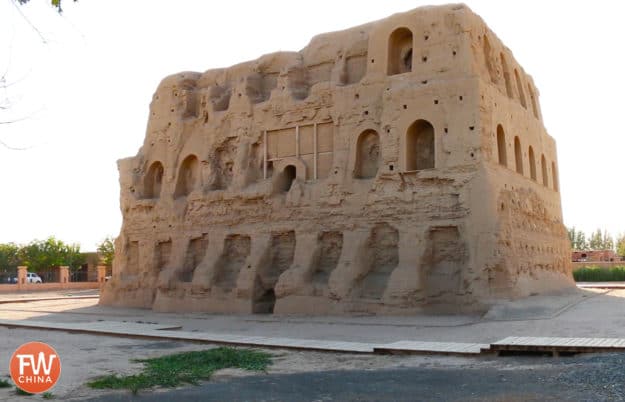
What the ruins at Gaochang and the two towers of Sirkip and Taizang have in common is that they together reflect the prominence of Buddhism in Xinjiang during the height of the Silk Road trades.
For Uyghurs, the ruins are also a reminder of their Buddhist cultural heritage prior to their conversion to Islam.
The Two Towers and the Great Game

Although Indiana Jones amounts to nothing more than mere fiction and fantasy, the two Buddhist towers west of Turpan feature in an actual tale of Western explorers in Xinjiang discovering treasure and antiquities along China’s Ancient Silk Road.
The most prominent of these Western explorers is Aurel Stein, a Hungarian-British archaeologist who made four expeditions to Central Asia in the early 20th century.
Inspired by his “patron saint” Xuanzang, Aurel Stein set out to discover the wealth of the Silk Road described by Xuanzang in his travels from Chang’an to India.
Across his expeditions Aurel Stein documented and photographed the ancient locations he visited, which included the Sirkip Tower and Taizang Tower.
As for Silk Road treasures, Aurel Stein uncovered and took with him ancient tablets, relics, frescoes and his largest find of 40,000 scrolls including the world’s oldest printed text the Diamond Sutra.
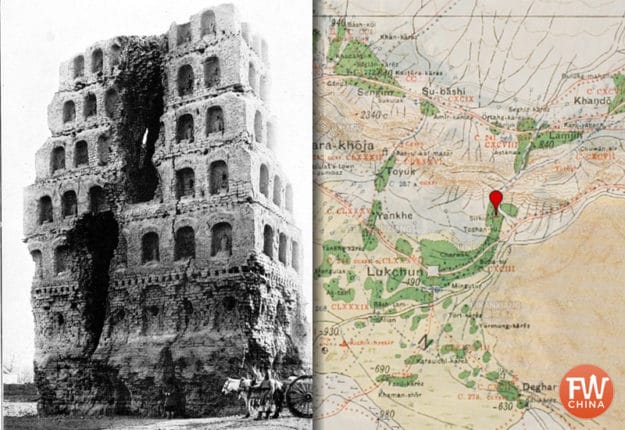
All these discoveries did not come without a little competition however. It did not take long for news of Aurel Stein’s discoveries to reach competing factions and nations.
During the first quarter of the 20th century, archaeologists from Great Britain, Russia, Germany, Japan and other nations competed for shares of Silk Road treasure.
These archaeological exploits even got tangled up in what has been termed the Great Game where Great Britain and Russia competed for political influence along the crossroads of their empires.
Apart from the Western archaeologists that traversed China’s far west at the behest of their governments, Christian missionaries also happened to find their way out to Xinjiang.
Among the most famous include Francesca French and Mildred Cable who documented the Tower of Sirkip and the Taizang Tower in their book, The Gobi Desert.
How to Visit the Taizang Tower
The Taizang Tower, or taizangta 台藏塔, is located 40 kilometers east of Turpan in Sānbǎoxiāng. It is also less than two kilometers from the ancient city of Gaochang and not too far from the Astana Tombs.
If the Astana Tombs are of interest to you, you can stop there before heading out to Taizang Tower or the ancient city of Gaochang. However as Taizang Tower is absent from travel guides, it may take some exploring on your part to discover this site on your own.
- Transportation: You need to hire a private taxi to visit Taizang Tower. Rates depend on the size of your party and how many places you would like to visit on the way, but generally you can push to have a standard taxi take you to Astana, Gaochang, and Taizang Tower for 400-600 RMB.
- Entry Fee: When I visited, the gate was locked and visitors were not permitted inside. I was told that the entry fee used to be 30 RMB. Information I found indicated a man across the street held the key and would let us in, but after much negotiating he wouldn’t allow it. Fortunately, even if you come up against the same problem, it’s still possible to walk around the perimeter of the tower.
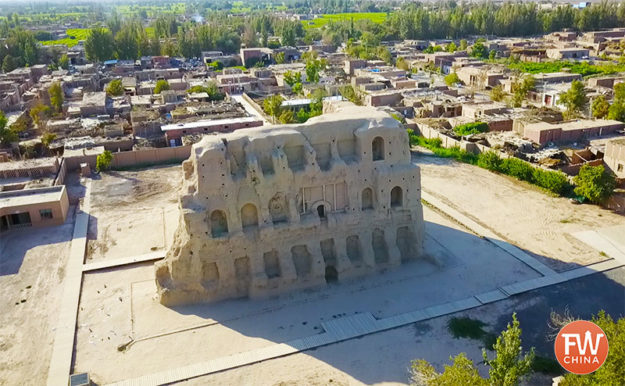
Final Thoughts on Buddhist Stupas in Xinjiang
If you are a history buff or if the thought of exploring ancient Silk Road ruins sounds appealing, be sure to check out the Taizang Tower during your visit to Turpan.
You may even experience the feeling of being Indiana Jones discovering a lost city!
Remember, all of this information and so much more can be found in the FarWestChina Xinjiang Travel Guide. Grab a copy for yourself – I promise you won’t be disappointed!
Have you visited the Taizang Tower or ruins of Sirkip in Turpan? Do you have any interesting historical facts on the tower not covered in this guide? Please share your thoughts below!




